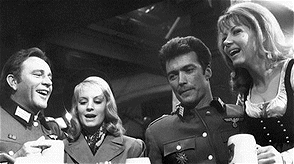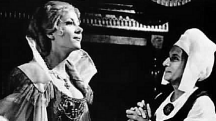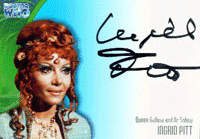 |
"In
‘Vampire Lovers’ and ‘Countess Dracula’, the nudity had been an authentic
part of the story. Suddenly, nudity and sex were the stories. It wasn’t
prudery that made me turn them down, I was ready to bare a breast with
the best of them. But the stories – ugh!”.
Her other horror movies include the Amicus production ‘The House That
Dripped Blood’, her own personal favourite, in which she played a vampire
called Carla. She also featured in the cult classic ‘The Wicker Man’,
although the film was so drastically edited that most of her scenes
ended up on the cutting room floor. Together with her husband Tony Rudin,
she formed a production company called TRIP to produce TV plays and
stage shows and they moved to Argentina for three years, where she featured
in another horror movie, ‘The Wolf.’ During their time in Argentina,
Ingrid and Tony wrote a book, ‘The Perons’, published in 1982. Ingrid
then concentrated her efforts on becoming a successful author, although
continuing to appear in various TV shows and occasional films such as
‘Who Dares Wins’, ‘Underworld’ and ‘Wild Geese 2’. |



 by
Bill Harry
by
Bill Harry







